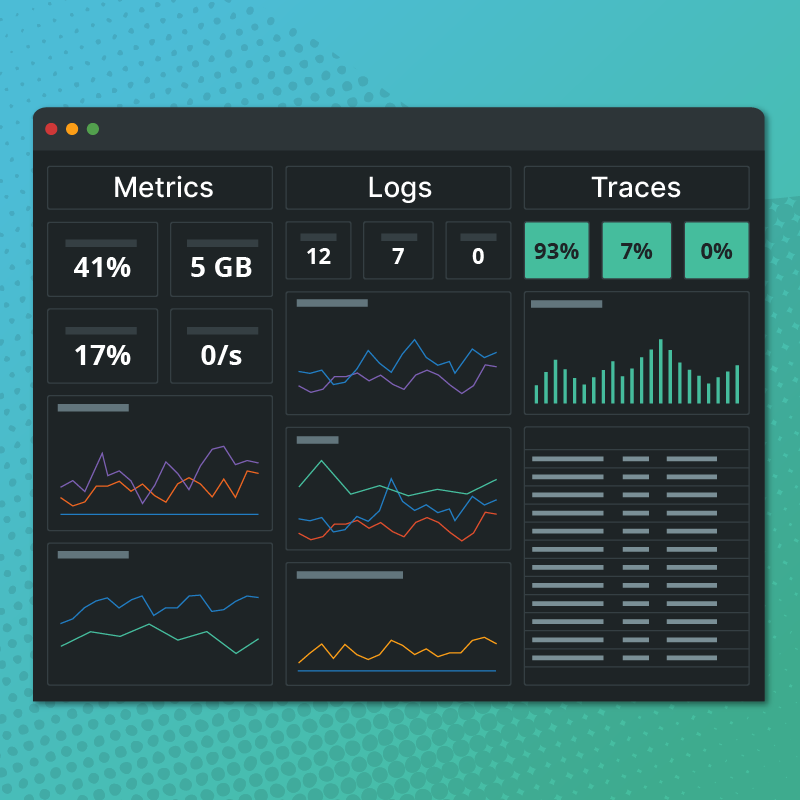Navigation and URL Changes
I’ll start this update talking about the most obvious changes to the UI, which is our new completely horizontal navigation and new URL structure.
We had received a lot of feedback about the mix of horizontal and vertical navigation. The tabs we were told were hard to read, especially with the text being rotated 90 degrees, users weren’t sure that the tabs were part of the navigation once they got to the page, and the ever confusing + button had to be explained to almost everyone. It was our take on what I would call a classic site layout, but in the end didn’t really resonate with our customers.
The new layout is much easier to understand and use. Main nav at the top, sub nav below, search box in the upper right where one would expect it and the + button has been replaced with text like “+ New Check” or “+ New Graph”. An added benefit of this change is we were able to reclaim some vertical whitespace, making the page a bit tighter. Not to be completely aesthetic, we recently read an article by Ben Kamen’s about Breaking down Amazon’s Mega Dropdown so we incorporated some of those ideas to look at mouse acceleration and direction so we don’t flip to another sub nav on hover as you try to navigate to a new page.
As you probably also noticed, our URL structure changed to account.circonus.com. This should have been as transparent as possible, old URLs will continue to work for the foreseeable future, in app links will however take you to the new format.
Simplified Maintenance
In the middle of February we launched the much awaited maintenance window rework. Previous to this, the controls were fine grained requiring users to mark individual metrics as in maintenance. While this provided a ton of flexibility, it made it more difficult to work at a higher level as machines were taken offline for work, etc.
The new maintenance windows solve this by providing multiple layers of control. Starting at the metric level, you can now also set maintenance on a check, a check bundle, a host or your entire account. Along with this change, when items are in maintenance they do not trigger new alerts to show up in the UI, previously you would see each alert, however notifications would be silenced, this reduction in noise should help you find problems faster.
MySQL From C to Java
Our last item involves a broker update that is coming down the pike later this week, and one we wanted to make sure was announced a little ahead of time.
Currently the way that we communicate with MySQL is through the C library that we build as a module to our broker. This library at times can cause stability issues when certain scenarios occur, typically we see this when a server stops responding correctly. Additionally, MySQL does some tricky things internally with the various “show X” commands that make it hard to maintain the various nuances in C. Because of this we are switching out the C lib for a JDBC implementation, this JDBC option is already how we talk to Oracle and MS SQLServer.
We been running this new version of the check internally and with some of our customers for awhile, taking special care to make sure metric names don’t change, we are pretty confident that this will be a transparent switch. Additionally, we have been able to add much improved support for commands like “show status” and “show master/slave status”, among others. Should you notice any issues after an upgrade, please contact support.
Update (3/21): Due to some unrelated changes, the release of the new broker code has been rescheduled to next week.
2013 has already proven busy for us and doesn’t look to be slowing down. As always, give us your feedback, user input helps drive our development.



